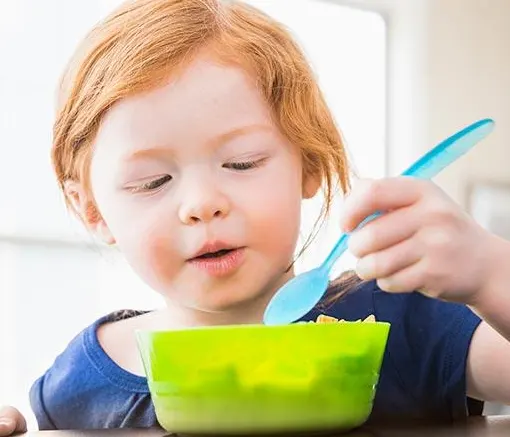Iron deficiency anemia is a common blood disorder that occurs when red blood cell counts are low due to a lack of iron. Red blood cells need iron to produce a protein called hemoglobin that helps them carry oxygen from the lungs to all the parts of the body. Iron deficiency is the most common cause of anemia in otherwise healthy children in the United States.
Children with iron deficiency anemia may tire easily, have pale skin and lips, and have a fast heartbeat. Iron deficiency anemia is usually discovered by a blood test during a routine medical examination. Mild iron deficiency anemia is usually treated by consuming an iron-rich diet or taking oral iron supplements. More severe iron deficiency may be treated with IV iron or even blood transfusion. In children with a rare, inherited version of iron deficiency anemia — iron-refractory iron deficiency anemia (IRIDA) — the child is born with a gene mutation that causes iron deficiency and may require regular intravenous iron infusions.
Children and young adults with anemia are treated by the Blood Disorders Center at the Dana-Farber/Boston Children’s Cancer and Blood Disorders Center. Our program brings together world-renown pediatric hematology specialists and support staff, including hematopathologists, hematology nurse practitioners, social workers, and designated hematology patient coordinators. For many appointments and certain procedures, your child can also receive care at one of Boston Children’s satellite offices.
Once a child is found to have iron deficiency anemia, he or she will typically require a daily iron supplement by mouth to increase the iron levels and hemoglobin back to the normal range.
Multivitamins that contain iron and dietary changes may help. However, this is typically not enough once the patient is anemic.
It is important that iron supplements are taken on an empty stomach, or with a small amount of food, in order for them to be absorbed properly. Children should not take iron with milk or caffeinated drinks.
It is helpful for kids to take iron with foods that are high in vitamin C, such as orange juice, strawberries, bell peppers, and tomatoes. These foods will help to absorb the iron.
Kids should start to feel better within a few days after starting iron supplementation. The hemoglobin levels will start to go up after about one month as more red blood cells are made.










